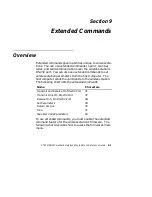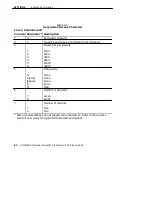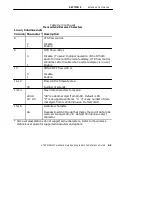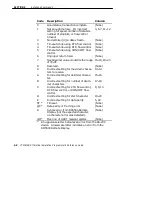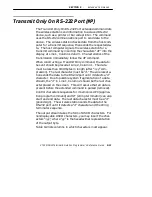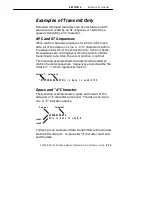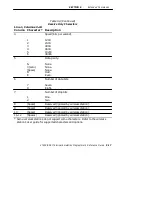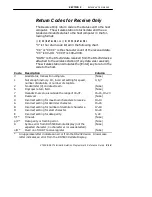
SECTION 9
"
Extended Commands
VT220/ANSI Terminal Emulation Programmer’s Reference Guide 9-7
Flow Control
Transmit supports three types of flow control: CTS, DSR
(RT5900 Series only), and DTR. Use CTS and DSR flow
control lines to show XON/XOFF conditions from the output
device. Also use them to prevent output when the wireless
station has no output device. The DTR of the output device
should connect to either the DSR or CTS lines. On the
wireless station, DTR is normally low and is raised to indi-
cate that the wireless station is prepared for an RS-232
data exchange.
XON/XOFF is the same XON/XOFF flow control supported
by most devices. The timeout value tells the wireless sta-
tion how long to wait for the flow control handshake before
returning a one byte error value.
Return Codes for Transmit and
Receive
The Transmit and Receive return code is the status sent to
the host computer. The wireless station returns data and
the extended command’s status to the host computer in the
following format:
\\X\CC\DATA<CR>
or
\\x\cccc\DATA<CR>
“X” is the return code listed in the following chart.
“CC” or “CCCC” is the character count of the data returned.
“CC” is 00--99. “CCCC” is 100--2000.
“DATA” is the RS-232 data received from the RS-232 device
attached to the wireless station (if any data was received).
The wireless station simulates the [Enter] key to return the
code to the host.
Summary of Contents for VT220/ANSI
Page 4: ......
Page 18: ...CONTENTS xiv VT220 ANSI Terminal Emulation Programmer s Reference Guide...
Page 26: ...SECTION 1 Introduction 1 8 VT220 ANSI Terminal Emulation Programmer s Reference Guide...
Page 264: ...APPENDIX A Bar Code Scanning A 4 VT220 ANSI Terminal Emulation Programmer s Reference Guide...
Page 276: ...INDEX Index 12 VT220 ANSI Terminal Emulation Programmer s Reference Guide...









